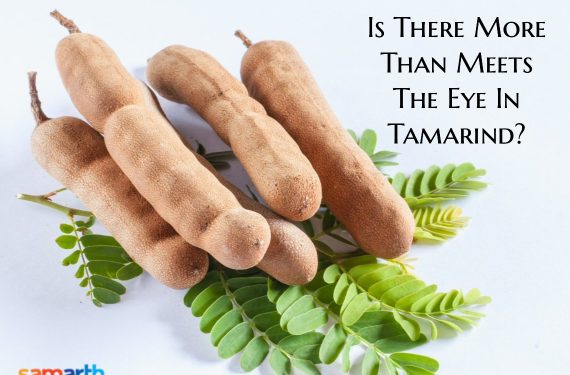For quite some time now, we have seen how many of the ingredients used in Indian cuisines are being hailed as healthy and beneficial. It does appear as if our ancestors were quite aware of the health benefits of these ingredients. Perhaps, that’s why they made it a part of everyday cooking, so that we remain healthy, through a proper diet, one that helps build immunity and also fight many diseases.
A lot is being said about the spices like turmeric, ginger, cinnamon, etc. But there are also a few of the common ingredients about which not many are aware of still. For example, tamarind (a few different forms of it) is a common ingredient in many Indian cuisines, predominantly in the South. Even in the north, the Tamarind chutney is very popular and commonly used in chats. So, is there more to the ordinary tamarind than what meets the eye? How is it helping us with our health issues?
Knowing Tamarind

Join Now >
Tamarind is very common in most Indian households, and you also find this tree, growing its fruit in abundance, in many rural areas. For many folks, they may even have childhood memories of picking and eating the tamarind. It is known as Imli or Puli, is mostly sour, with a bit of sweetness; many people love it for this tangy taste, and this is also why it is used in curries and chutneys.
It is easy to pick and preserve and is mostly distributed for consumption after it is dried well in the sun. The fresh fruit is sticky and pulpy, with seeds, which need to be discarded. The rural kids even play with these seeds, and they can be preserved for long.
In some parts of India, you will find a few different variants of the tamarind, namely, Malabar tamarind and even the Mangalore tamarind or the Kokum. These are different from the traditional tamarind that is used across India.
Health benefits
There has been a lot of research that has been done on tamarind, and the results are very encouraging. For starters, it is a very rich source of nutrients that are highly essential for our body. It contains Vitamins, Potassium, Magnesium, and fiber that helps many of our bodily functions, and also helps build immunity. Another aspect of tamarind that indicates its benefits is that it contains antioxidants that help fight against the dreaded disease, cancer. It also contains Vitamin A, B and C, flavonoids, and carotenes, each of which has been proven to be essential for good health.
Besides, the Vitamin components like thiamin, folic acid, riboflavin, and niacin found in tamarind, work along with the antioxidants to ensure good metabolism. It has also been proved scientifically that tamarind is useful in reducing blood pressure and cholesterol, in turn aiding a healthy heart. This is because of the fiber content, which helps remove the bad cholesterol LDL from the arteries. It is the potassium that helps regulate the blood pressure and Vitamin C that works to eliminate and prevent free radicals. The fiber also makes it a good laxative and helps improve gut health, and this has been proven through studies as well.
Some research results suggest that it can be useful in weight reduction, as it suppresses hunger, and also inhibits the enzyme that stores fat. Studies are still on to understand the impact of thiamine in tamarind on the nerve functions in the body. It is said that thiamine can also help with muscle development.
Since tamarind contains an enzyme that stops carbohydrate absorption, it is said to be good for diabetes. Tamarind has been found to regulate the insulin and glucose levels in the body. Tamarind has been known to help reverse fatty liver disease. Research is still on to conclude on the antiviral, antibacterial, and antifungal properties of tamarind and its possible usage in the treatment of certain diseases.











